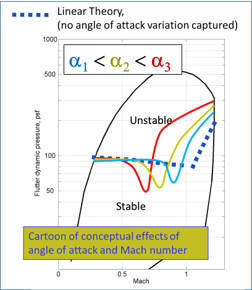High Angle Working Group
Lead: Pawel Chwalowski (Pawel.Chwalowski@nasa.gov)
High Angle November 2022 Slides
High Angle October 2022 Slides
High Angle September 2022 Slides
Jacobson BSCW Stability Plotting September 2022
High Angle August 2022 Slides
High Angle June 2022 Slides
High Angle October 2021 Slides
High Angle March 2021 Slides
High Angle Februray 2021 Slides
High Angle January 2021 Slides
High Angle November 2020 Slides
SciTech, October 2020
High Angle of Attack Updates, September 2020
Objectives
- Use current state of the art coupled CFD tools in a predictive manner (coupled: structural dynamics + unsteady aerodynamics)
- Apply to configuration and test conditions that challenge the range of application of the modeling (i.e., physics are challenging) due to separated flow and dynamically separating flow
- Define regions of Mach number, angle of attack and structural dynamic characteristics that require different analysis methods, grid resolution and treatment, temporal resolution, etc.
- Examine the influence on the unsteady characteristics including flutter of in-tunnel effects, including juncture flow
Background
- Transonic conditions are particularly challenging for computational tools because strong shocks may introduce separated flow
- The equations on which many methods are based fail to include separated flow field physics
- Flutter can be introduced into a system due to flow separation
- The most critical transonic flutter cases are those in the transonic dip, where the onset condition (dynamic pressure at which flutter occurs) can drop rapidly in terms of Mach number change and angle of attack change
- The transonic dip points are difficult to calculate and difficult to obtain experimentally
Initial configuration: NASA Benchmark Supercritical Wing
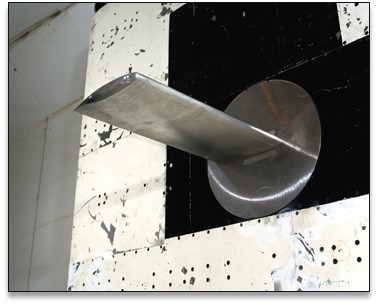

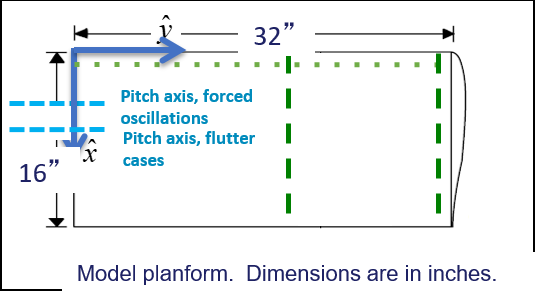
Initial configuration: NASA Benchmark Supercritical Wing
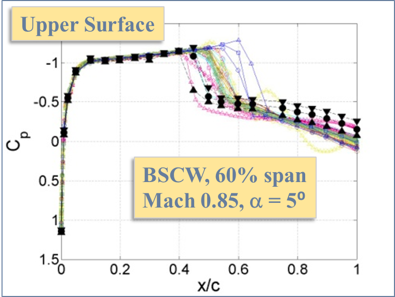
AePW-1: separated flow produced a challenge for analyses, even for steady conditions
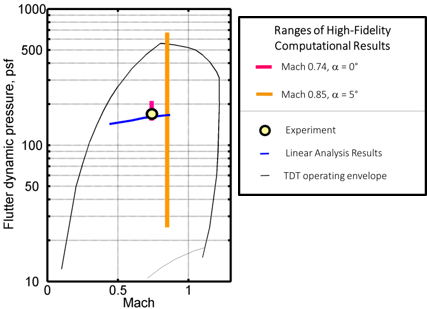
AePW-2: Very large variation in flutter onset predictions at separated flow conditions
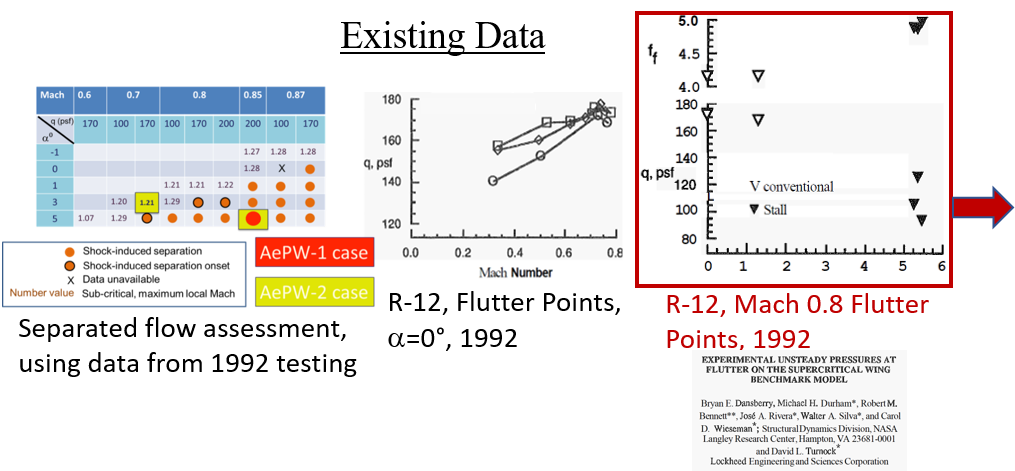

AePW-3 Predictions to date at Mach 0.8, AoA = 5°

Computational and Experimental Plans
- Perform input uncertainty analyses (geometry, angle of attack, elastic axis location, analysis method parameters)
-
Conduct additional wind tunnel testing:
- Measure the flutter boundaries including the front, bottom, and backsides of the flutter buckets
-
Acquire global detailed subcritical data sets:
- Digital image correlation measurements for static and time-accurate model motion and deformation
- Unsteady pressure sensitive paint for on-surface quantities
- Unsteady particle image velocimetry for off-body velocities
- Acquire repeat data points
- Quantify (measure) the flow environment
